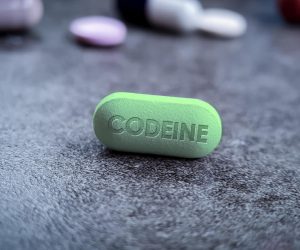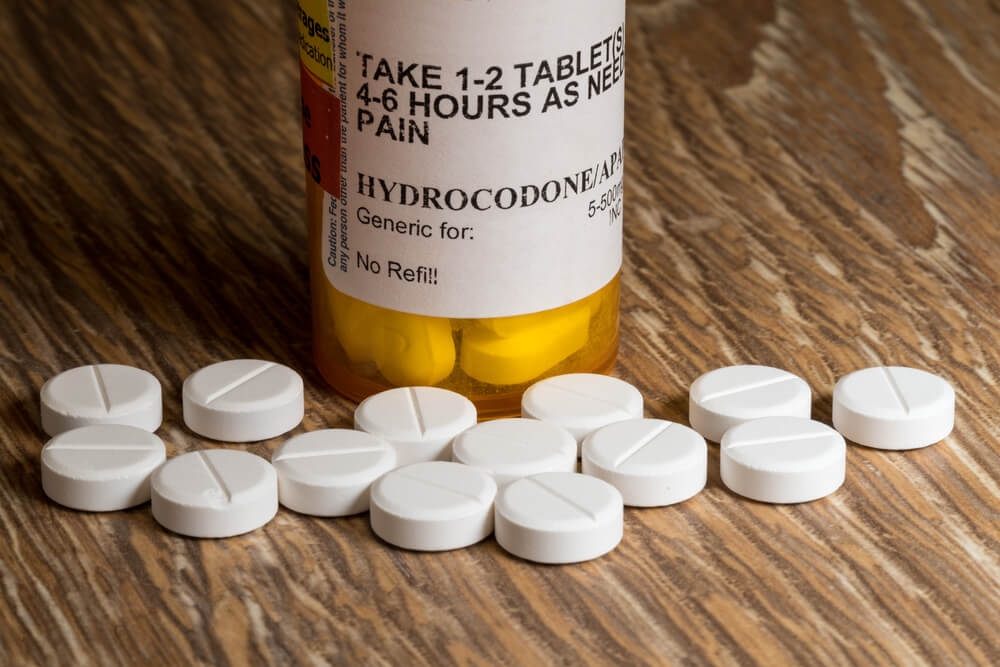Codeine vs. Hydrocodone: How Are They Different?

What Is Codeine?
Codeine and Hydrocodone are painkillers, but there are distinct differences between them and how they work in your body. Codeine is a drug your doctor may prescribe you to treat mild to moderate pain, something you might experience after getting your wisdom teeth pulled at the dentist. It is also used to treat coughs and severe diarrhea due to the side effect of constipation many people experience when taking codeine. Codeine works in the body by being broken down into morphine by your liver; the morphine then acts on the opioid receptors in the brain. Opioid receptors receive messages from the brain and body that indicate pain, and opioids block these messages. Codeine is part of the opioid family and shares many side effects with drugs like morphine and hydrocodone. Codeine is a schedule II drug under the controlled substances act, which means it has a high potential for drug abuse, and the prescription of the drug is tightly regulated by the FDA. Prolonged use of codeine can lead to physical dependency and withdrawal symptoms when you stop taking the drug.
What Is Hydrocodone?
Hydrocodone is also part of the opioid family of drugs and is significantly stronger than codeine but less strong than oxycodone. It treats moderate to severe pain like broken bones, burns, cancer, and pain after surgery. Hydrocodone is also broken down by the liver into morphine, which acts on opioid receptors and is often prescribed orally with acetaminophen (Vicodin) or ibuprofen. A long-acting version of hydrocodone, called Zohydro ER, has had its FDA NDA approval revoked just this past year due to the risk of death and misuse by crushing and snorting the slow-release tablets.
Hydrocodone shares the same side effects as codeine like constipation and drowsiness, but due to the increased strength of hydrocodone, the risks of abuse and fatalities are higher. Hydrocodone is also a schedule II drug due to the risk of physical dependency and the potential for misuse. There were over 400,000 prescriptions for hydrocodone in some form in the united states as of 2018. Hydrocodone in its various forms has been the second most encountered opioid prescription drug in DEA evidence since 2009.
 Similarities of Codeine vs. Hydrocodone
Similarities of Codeine vs. Hydrocodone
As mentioned above both codeine and hydrocodone share the same side effects as all opioids do, such as
- Drowsiness
- Constipation
- Itching
- Nausea
- Vomiting
- Dry mouth
- Miosis
- Physical dependency
- Euphoria
- Dizziness
- Headaches
- Mental and physical impairment
- Anxiety, unease, and fear
- High blood pressure
None of these withdrawal symptoms is very pleasant to experience, but the real danger from both codeine and hydrocodone is depression of the respiratory system. Essentially this means that you stop breathing or cannot supply your body with enough oxygen. People with asthma or other respiratory conditions are at a much greater risk of this happening. Another deadly condition that can arise from long-term use is liver and kidney failure. Using codeine or hydrocodone in ways other than prescribed to you like snorting or injecting also raises your risk of overdose. Both hydrocodone and codeine can interact dangerously with the following drugs
- Benzodiazipenes such as Xanax or Ativan
- Anti-psychotic medications like haloperidol and risperidone
- Sleep medications such as Ambien and Lunesta
- Muscle relaxants including Amrix and Zanaflex
- Alcohol
- Barbiturates and anti-seizure drugs like Gabapentin
- Tricyclic anti-depressants like amitriptyline
- SSRI anti-depressants like Effexor or Prozac
- Any other drug that affects the central nervous system
Learn about the list of the strongest to weakest opioids in our blog below:
3 Differences Between Codeine Vs. Hydrocodone
Everyone responds to pain differently, and although both codeine and hydrocodone fall under the opioid class of drugs there are some key differences like
- Origin – Codeine is mostly naturally derived from alkaloids present in the opium poppy, while hydrocodone is a semi-synthetic derivative. Being natural doesn’t reduce the risk of developing a substance use disorder. The risk for both codeine and hydrocodone remains high.
- Strength – Although hydrocodone is about half the strength of oxycodone, it’s still much stronger than codeine. Hydrocodone is used differently than codeine in the treatment of pain as well. The pain must be incessant and strong before being prescribed hydrocodone, while codeine is prescribed more freely.
- Effects on the body – People who experience itching while taking codeine often think they’re having an allergic reaction, and that’s because it activates a histamine response in the body. An actual codeine allergy is pretty rare. Taking hydrocodone is much less likely to trigger the histamine response in the body. A percentage of the population lacks the liver enzyme required to convert codeine into morphine, requiring them to take other painkillers to stop the pain. On the flip side, people with double copies of that enzyme turn codeine into morphine quickly and are at risk for overdose even with the proper dosage.
Overcome Struggles With Codeine and Hydrocodone With Help From WhiteSands
People who experience chronic or severe pain and are prescribed any opioid painkiller are at risk of developing a physical dependency on the drug. This isn’t something you’ve done wrong or any moral failing, it’s a natural response in the body that happens due to the way painkillers work. We are all susceptible to the effects of opioids at any time during our life. If you or your loved one is struggling to stop taking their painkillers or is experiencing withdrawal symptoms, WhiteSands Alcohol and Drug Rehab is here for you. You don’t have to tackle this on your own, there is support and the best in care waiting at our facilities.
At WhiteSands Alcohol and drug rehab in Tampa fl you’ll benefit from the care and expertise of our staff, who are well-educated in their respective fields and experienced in treating physical and emotional dependence on painkillers. You’ll also enjoy the amenities we are proud to offer, which include a pool, fitness room, 24-hour cafe, and lush tropical grounds with beautiful walking paths. You’ll never feel that you’re just a number or that you’re in an institutional setting at WhiteSands Alcohol and Drug Rehab. We’ve helped many people like you discontinue prescription painkillers and host alumni events like BBQ picnics and paintball to celebrate their successes. Learn more about how treatment works on our FAQ page, and read our commitment to providing the very best in rehabilitation medicine. A life free from painkillers is waiting for you. Contact our 24/7 admissions team is ready to begin your path to recovery.
If you or a loved one needs help with abuse and/or treatment, please call the WhiteSands Treatment at (877) 855-3470. Our addiction specialists can assess your recovery needs and help you get the addiction treatment that provides the best chance for your long-term recovery.

 Similarities of Codeine vs. Hydrocodone
Similarities of Codeine vs. Hydrocodone